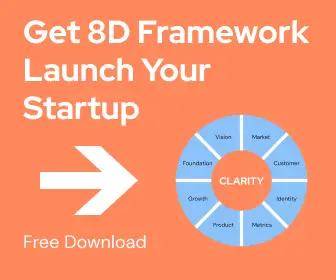Time to Get Technical (But Not Too Technical)
Once upon a time, blogs were online journals where writers shared their thoughts.
It all started in 1994 when college student Justin Hall created ‘Links.net,’ his personal collection of web pages and snarky comments. An era of personal homepages and online diaries was ushered in, with a tight-knit crew of early bloggers obsessed with each other’s stats and comments. Fast forward five years, and platforms such as Blogger, LiveJournal, and Xanga hit the scene, turning blogging mainstream. Blogger even got snapped up by Google in 2003.
Amid world chaos, blogs become trusted news sources, capturing the raw emotions of events such as 9/11. Garrett Graff became the first blogger to score White House press credentials – blogging was now a serious profession.
With YouTube’s help, vlogging took over as bloggers made bank through affiliate links and sponsorships. Blogs evolved beyond text sites into powerful marketing tools. ‘Microblogging’ was born with Tumblr and Twitter, and the rest is history!
30 years later, blogging is a whole different beast, and a ‘blog’ is now a profitable business.
There’s maybe just one thing that hasn’t changed: The fire every blogger needs in her belly to kick off a blog and keep it buzzing.
Here’s why you need a blog in 2024
- Of the 1.9 billion websites in the world in 2024, roughly one third are blogs! (aka – blogs are still working)
- 77% of internet users read blogs
- 68% of online adventures kick off with a search engine, and the more websites link to a page, the higher it tends to rank
- Businesses that blog get twice the email traffic compared to those who don’t
- 9 out of 10 marketers swear by blogs to hit their business goals
Blogging Lingo 101

Dedicated Hosting, Reader Persona, HostGator, GoDaddy, ThemeForest, HubSpot, Hosting Account, Grammarly, SEMrush, WordPress, Medium, Domain Name, DreamHost, Namecheap, Self-Hosted, SEO, Niche, Shared Hosting, Affiliate Programs….
(alright. you don’t really have to learn all of them by heart. that’s not an exam)
Reality Check: Here’s All You Need To Start A Blog (And Make Some Money)
Everyone with a laptop and a dream thinks they can spin words into gold.
But once you’ve picked your poison – aka decided what you’re going to write about, it’s time to put your head down and get to serious work.
A blog ain’t some get-rich-quick scheme. There’s A LOT to do (no, really).
If you’ve been blogging (or thinking about it) for a while now, chances are you’ve got some pieces of the puzzle already – tick them off this checklist!
- Know Your Niche: If you’ve haven’t yet done it, narrow down on your blog topic. Here’s a guide on nailing the perfect blogging niche.
- Budget Check: You can start a profitable blog whether you’re going all-in with cash or flying on a shoestring. Decide how much you’re willing to spend on a platform (some, like Blogger, are free), and don’t forget to budget for marketing, design, and content creation.
- Name Game: Brainstorm a catchy and memorable blog name that screams your niche.
- Tone & Style: What’s your vibe? Readers who vibe with your style are more likely to stick around and engage.
- Domain Dilemma: Do you need a domain name? Think .com, .org, or .net. You can snag one through a registrar like GoDaddy.
- Hosting 101: You’ll need a host for your blog. A ‘hosting provider’ will basically help you rent your spot on the internet.
- Theme Time: Pick a theme that aligns with your niche and brand.
- Affiliates and Partners: You’ll need to get into how to make money blogging in serious detail, but for now, think about tying your blog into relevant affiliate programs.
- Content is King: You’ll need a bank of high-quality, engaging content that provides real value to your readers.
- Make Some Noise: Think about using social media and SEO tactics to reach a bigger crowd.
- Track Your Analytics: Don’t forget to check the numbers! Metrics such as views, visitors, and clicks can help you gauge were you need adjustments to your content.
The Perfect Platform: Why Your Blog’s Home Matters

Here’s the deal: you don’t need to be a coding wizard to get your blog up and running. There are tons of user-friendly platforms out there that make it a piece of cake.
When it comes to choosing the best blogging platform, you’ve got a buffet of options, each with its own flavor.
The heavyweight champion, the OG of blogging platforms is WordPress. And yes, I’m currently hosting Eightception on WordPress.
It powers 43.2% of the internet and offers advanced features, a zillion themes, and plugins. If you’ve ever scrolled through the TED Blog, TechCrunch, or Martha Stewart’s Blog, then you’ve already met WordPress in action.
It offers total control over your blog. But you have to be kind of technically savvy or have a trusted expert to set up everything in a great manner. It can be hard (and I’m still working on improvements).
Then there’s Blogger, the perfect playground for blogging for beginners. It doesn’t require hosting or a domain.
Medium is good for those who want to reach a wider audience quickly. But don’t forget, it’s Medium’s domain, not yours.
Substack is catching the fancy of bloggers looking to build thriving subscription businesses; top Substacks (Letters from an American, Lenny’s Newsletter…) are pulling in up to $5 million annually.
Other options include Ghost and Squarespace for user-friendly experiences. Wix is a drag-and-drop platform that’s super beginner-friendly, while Weebly is great for e-commerce. Drupal suits developers craving control, HubSpot CMS is ideal for marketers, and Hugo is for a minimalist alternative.
To pick the right option, think about your blogging priority.
Is it ownership and control? Start on WordPress or a similar platform.
Prefer discovery and reach? Use Substack or Medium to draw traffic to your main site.
A word of caution: Try not to build a business that relies 100% on someone else’s platform.
Deciding Where Your Blog Lives Online
Next up, choose who you’ll ‘rent’ your little bit of web space from.
Some platforms will ‘host’ your blog for free, but there’s a catch: their brand name will hitch a ride on your domain (you’ll land up with a website that’s called fancypants.squarespace.com or fancypants.wordpress.com). If you want to drop the extension, you’ll need to buy the domain name ‘fancypants.com’ (if it’s available for purchase).
A web host will also have a server that stores your files. Popular hosts are Hostgator, DreamHost, BlueHost, and Namecheap. Look for ones that tie in seamlessly with WordPress or your website, and give you a variety of hosting plans.
What’s in a Name? Crafting a Memorable Domain
Remember when Apple was almost called ‘Executek’? (Seriously, look it up). Steve Jobs changed his mind after a visit to an orchard farm.
Names matter—a lot! Your blog’s name is the first thing people see, and it needs to be something that sticks, in a good way.
You might face more resistance than you think with your blog name. The number of applications to The U.S. Patent and Trademark Office has shot up 70% in five years, and Hailey Bieber just got stuck in a lawsuit for naming her skincare line ‘Rhode’.
Think about what you want readers to feel when they see your blog’s name. You could play with keywords. Or spend time on a name generator. Try alliteration, adapt a saying, toss in a foreign word, or think about the branding. Use your name, combine unrelated words, or get creative with puns… there’s so much you can do!
Design Vibes: Nailing Your Blog’s Look and Feel
There are a few blogs that have something about them that makes us go back to them again just for the fun of it.
Like Oh Joy!’s colours, Design Milk’s organization, Wait But Why’s font, Humans of New York’s flow, and This Wild Idea’s imagery.
Your blog’s appearance and layout can be that cherry on top that keeps users coming back. Combine this with great content, and you’re on a roll.
Blogging Toolbox: Must-Have Tools for Success
As you get ready to create and publish your best content, take a look at the latest blogging tools: You’re probably familiar with ChatGPT for AI-assisted research and writing. There’s also Sudowrite and Hemingway. If you run out of ideas, Hubspot’s Blog Topic Generator can help generate topics. SEMrush and Moz exist to help you improve keyword rankings. Content Studio offers AI-powered content suggestions and social media scheduling, and Grammarly fixes what you write.
You’ll also need to get your visuals right, and for that, there’s Canva, Midjourney, Dall-E, and Design.ai.
Ready For Launch! Start Writing Killer Blog Posts

Alright, this is where the magic happens! It’s time to start creating epic, shareable blog content.
What will you share? Listicles? (Everyone loves a good list!) How-to guides? Case studies? Interviews? Personal stories?
You’ve probably been bombarded with talk about SEO, and for good reason. Bloggers swear by keyword research because it’s like getting a peek into your audience’s brain to see exactly what they’re searching for. And it’s only logical to fine-tune your content to align with what your readers seek.
On the flip side, obsessing just over SEO can box in your creativity. My take: I’m focusing on Engagement and Content, keeping SEO only 3rd place of my priorities.
So why not mix it up? Add long tail words and images, videos, and infographics. The best blogs also display a knack for getting inside their readers’ heads. You do need the right keywords, but balance them with creative content that stands out.
PS: Many a big-name blogger has faced backlash for using clickbait titles. In a world that increasingly values authenticity, don’t sensationalize your content just for the heck of it.
There’s a lot more info on promoting your blog (you always need more eyeballs on your content), and on monetizing it in other articles.
Takeaways
The stats behind the world’s most successful blogs are enough to leave anyone’s jaw on the floor.
Moz, a website for professional services for search engine marketers, makes $4,250,000 per month, driven by its blog.
Engadget is also making a fortune – $5,500,000 per month – with an army of writers and editors constantly providing reviews on every type of gadget possible.
And of course, the biggest and baddest of them all – Huffpost makes $14,000,000 per month, at a valuation of $1 Billion.
You have your blog’s blueprint ready.
Where you take it from there is up to you.








